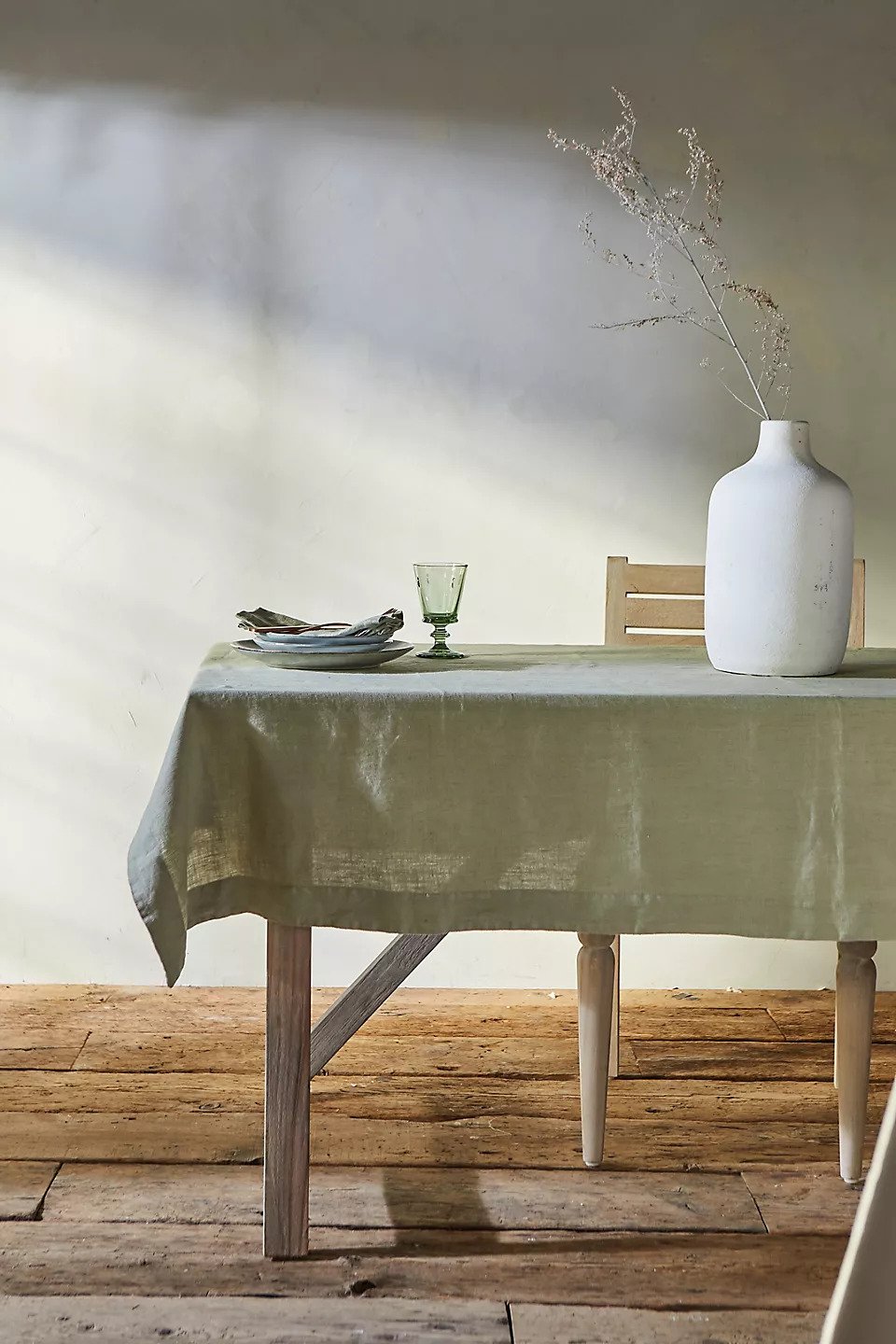How to choose a tablecloth – expert tips for acing the size, color, and material
It may seem simple, but picking the wrong size could ruin the look of your dining space, designers say

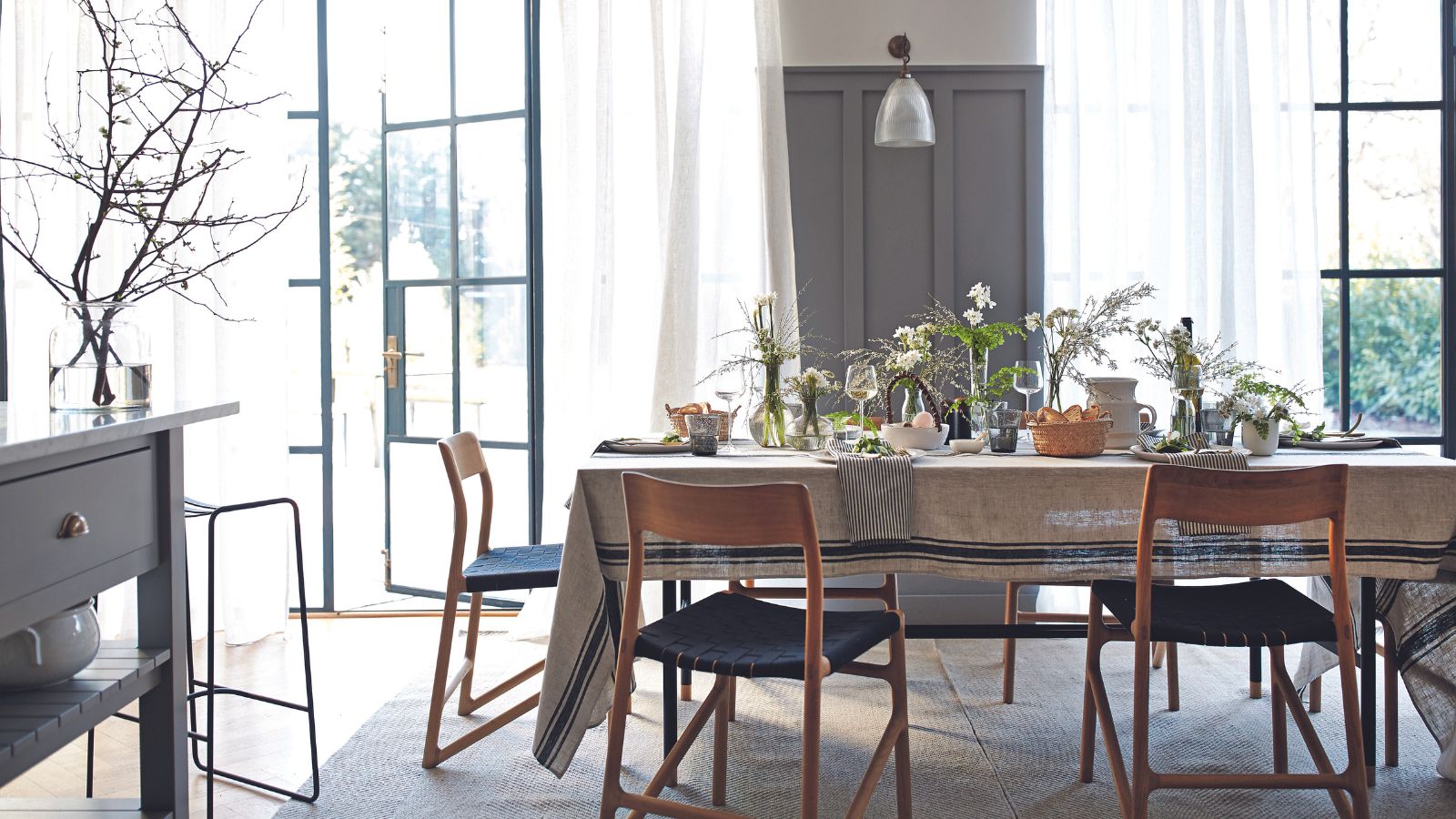
Of all the things we need to pick out for a dining room, a tablecloth seems like one of the easiest. However, picking the wrong size, shape, or color could make your dining experience less stylish, experts say.
Dressing a dining table is an art, so picking the right foundation sets the tone for the rest of the space, no matter if you are picking a full cloth, or showing off the table itself with a simple runner.
We have asked designers for their pro tips on how to choose a tablecloth, with tricks from deciding on the right drop to picking the right material and patterns.
How to choose a tablecloth
These are the four things you have to take into account before deciding on your dining table decor, designers say.
1. Pick the right size by deciding your drop
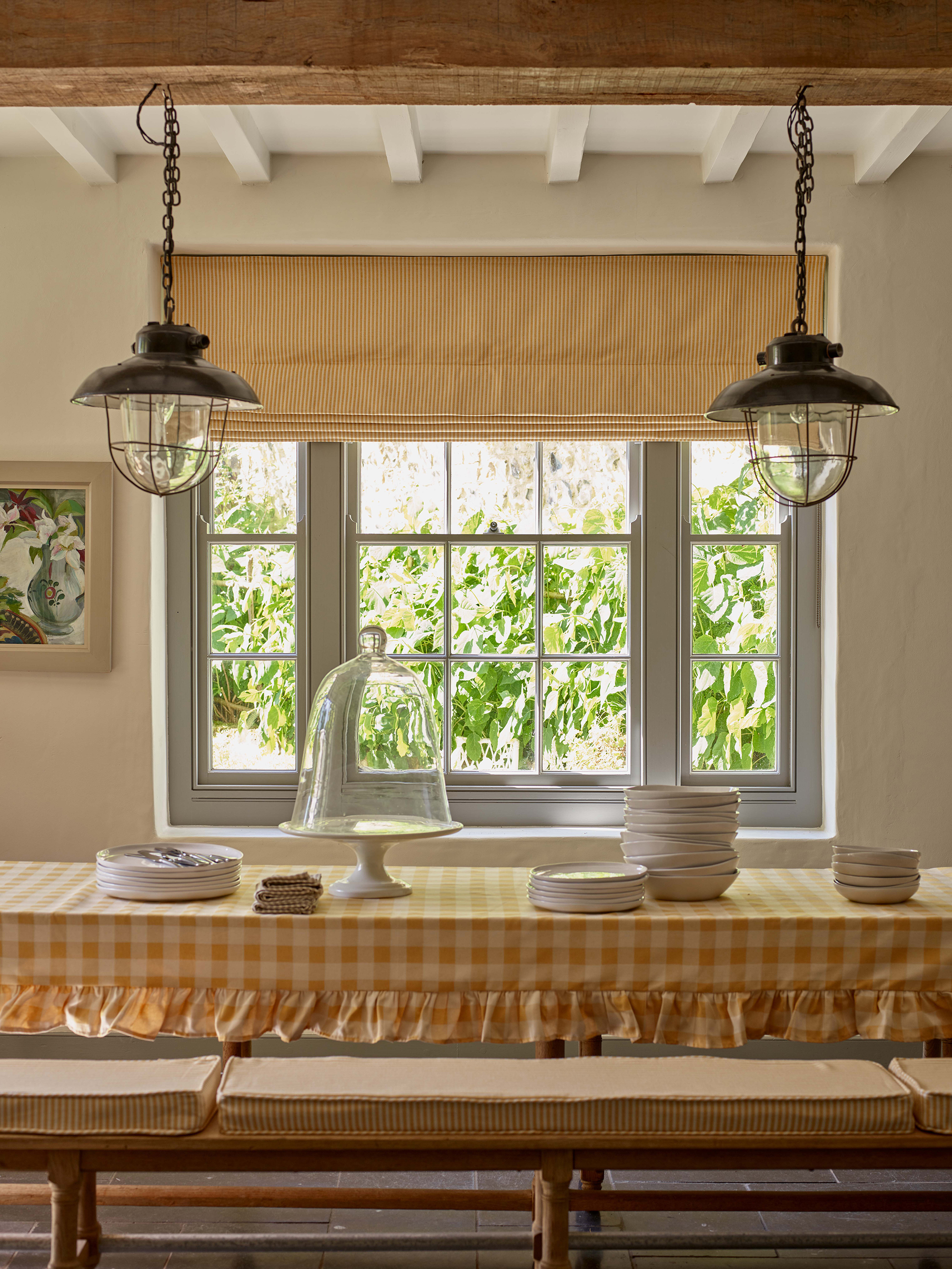
One of the most common mistakes people make when styling a dining table is picking the wrong sized tablecloth, shares Jackie Chou, interior designer and director of Archute.
‘A tablecloth that is too big will look sloppy and drag on the floor, while a tablecloth that is too small will expose the table legs and make the whole setting look cheap,’ he says. ‘To avoid this mistake, measure your table and add extra length for the overhang. A good rule of thumb is to have a six to 12-inch overhang on each side of the table, depending on the style and occasion. Typically, you want to go longer for more formal events, and shorter for everyday dining.
‘You can also use a tape measure or a string to mark the desired length from the floor before you go shopping,’ he advises.
Design expertise in your inbox – from inspiring decorating ideas and beautiful celebrity homes to practical gardening advice and shopping round-ups.

Jacky Chou is the principal and director at Laurel & Wolf online interior design agency. Jacky is also the principal and director at Archute, an editorial magazine about architecture, homes and gardens. They have been referenced by The New York Times, Bustle, House & Home, Bloomberg, and Angi.
A great formula to follow for selecting the right size is the width of your table plus double the decided drop, by the length of the table plus double the drop. For instance, for a table measuring 61” by 38” with an eight-inch drop on all sides, the math would look like this:
61”+16” = 77” long
38”+16” = 54” wide
Resulting in a tablecloth size of 77”x54”
For a round table, this equation is a little simpler – table diameter plus double the drop. For example, if you have a table with a 72” diameter, and want an eight-inch drop on either side, the math would be 72” + 16” = 88” tablecloth needed.
2. Opt for natural materials
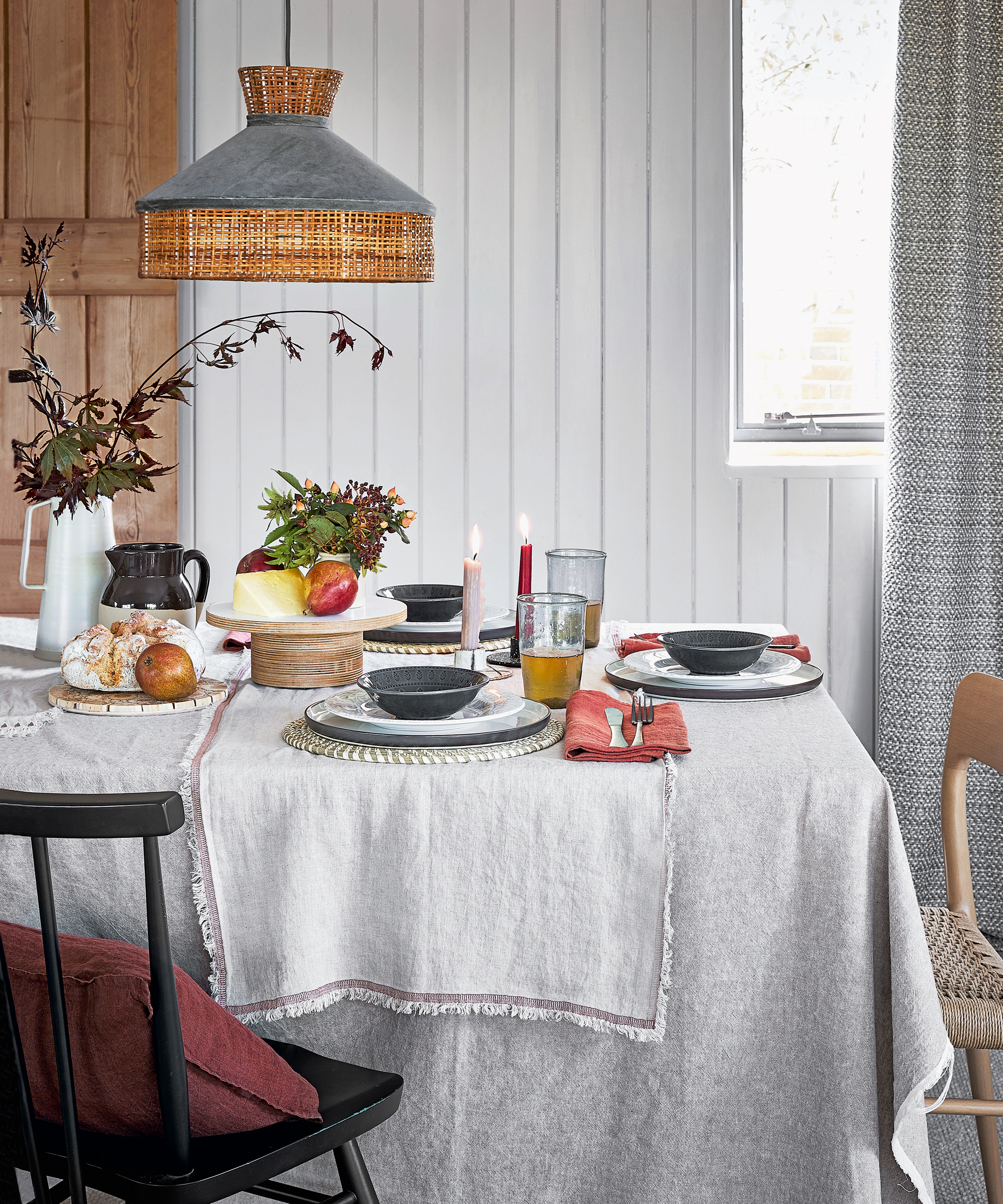
A classic way to make a home look expensive is to opt for natural materials, and this holds for your dining table too, says Barbara Stern, editor-in-chief at Ottoman Textiles.
‘Material choice is an area where people often go wrong,’ she begins. ‘While synthetic materials might be stain-resistant and make it easier to clean up after a dinner party, they don't have the same luxurious feel as natural fibers like cotton or linen.
‘I adore my linen tablecloth. It's timeless, and elegant, and gets softer with each wash. I've received so many compliments on it, and it has indeed been a huge upgrade for my dining setup.’
3. Choose a neutral base to suit any occasion
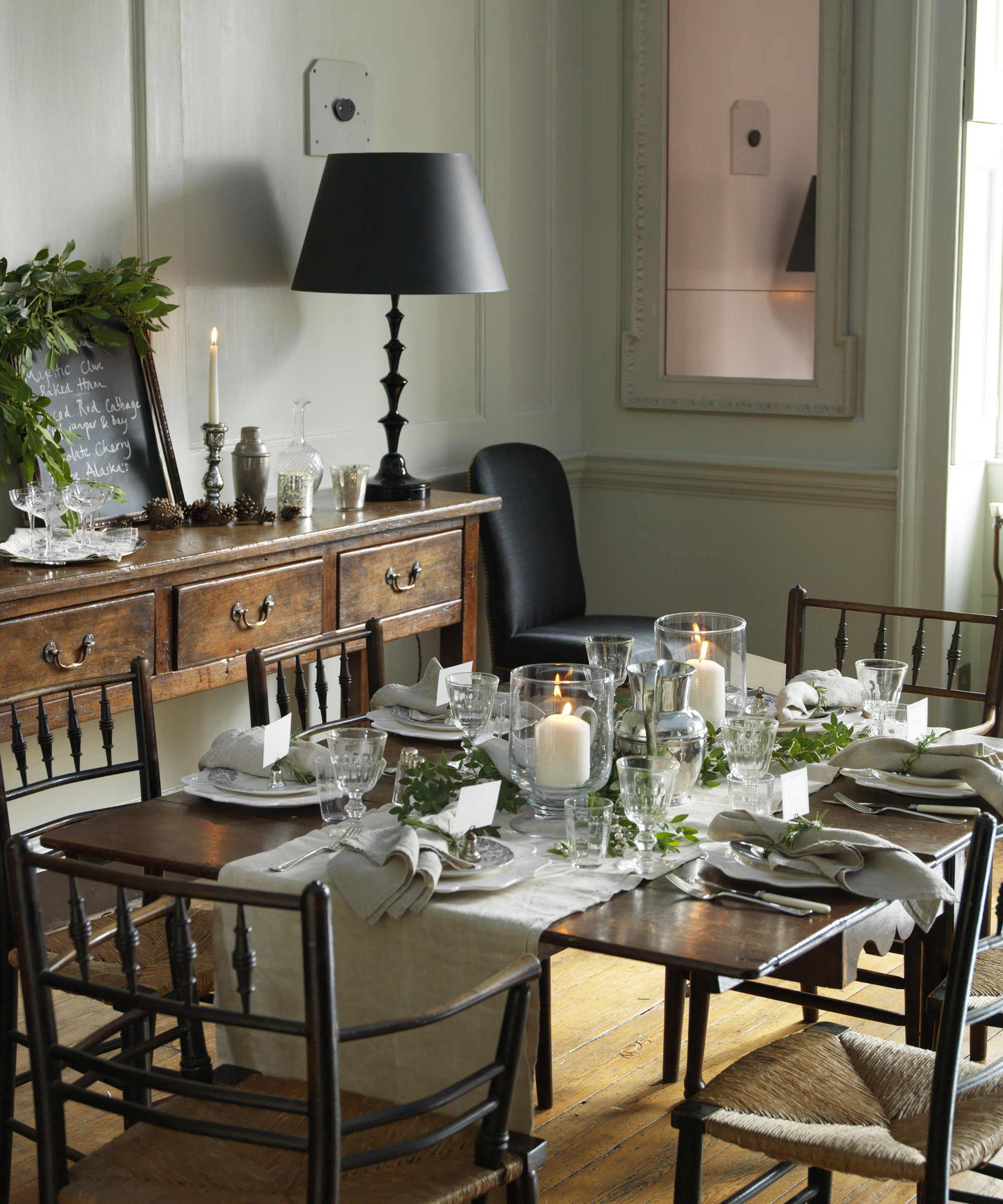
If you want to be able to set your table for any occasion, then the color of your tablecloth will play a huge role. While it is fine to have multiple tablecloths to rotate between depending on the event or holiday, having one neutral base will make it simple to change up your decor without having overflowing storage.
‘Hues play a pivotal role in setting or upsetting an ambiance. Dabbling in color variations is enticing, but it's wise to anchor your collection with tablecloths in neutral tones,’ Artem Kropovinsky, interior designer and founder of Arsight agrees. ‘They provide a consistent base, highlighting your tableware and ornaments. For special events, explore bolder or deeper tints, but always in harmony with the ambiance of the room.’

Based in New York, Artem Kropovinsky, founder of Arsight, has a decade of extensive and considerable global design experience. Prioritizing minimalism, sustainability, and authenticity, Artem, alongside his team of professionals, works on projects in the US and worldwide.
4. Play it safe with patterns
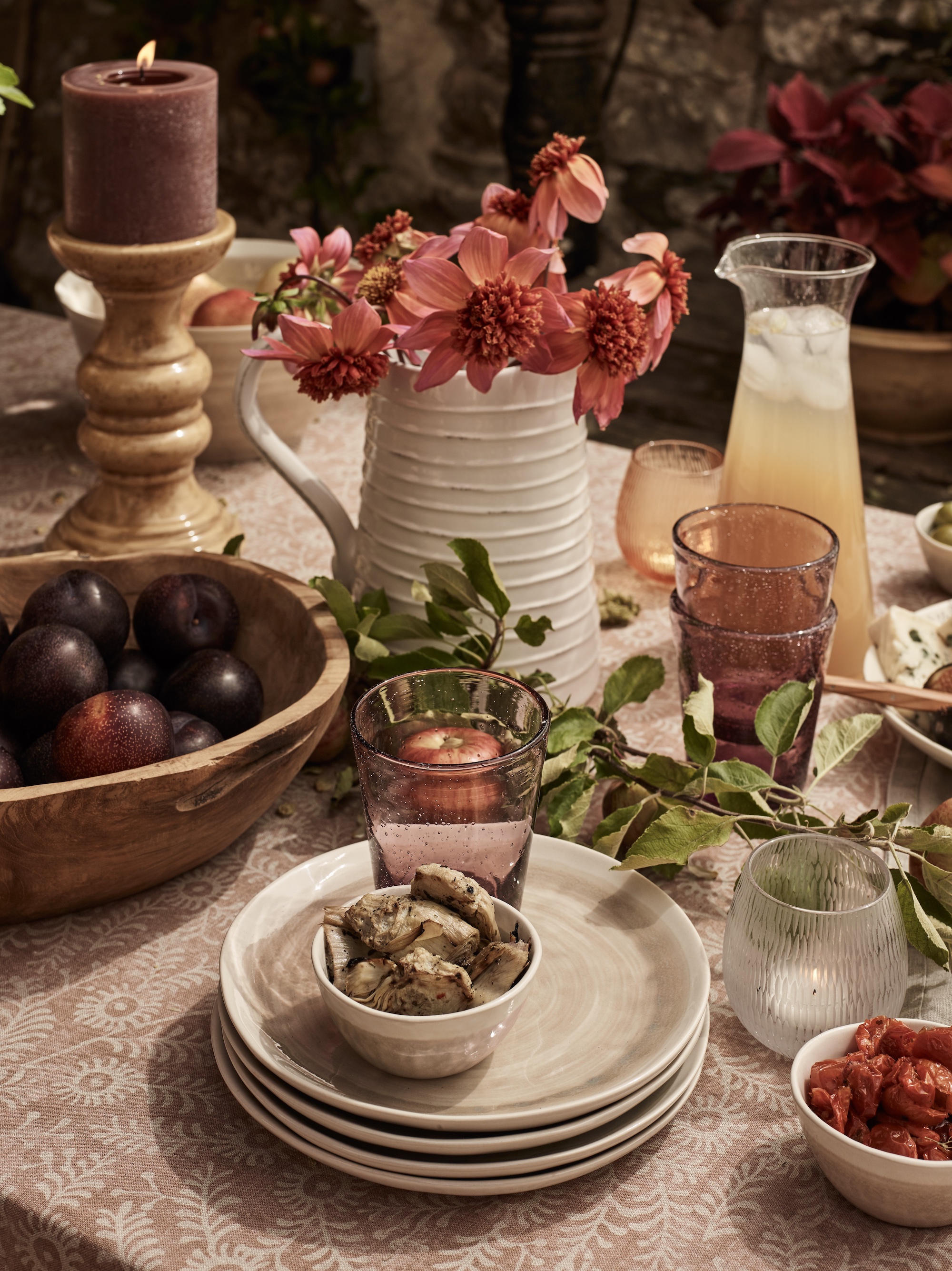
Decorating with pattern is a simple yet effective way to add intrigue when decorating any space, however, Jacky Chou, designer, recommends playing it safe when it comes to table linens.
‘Another common mistake is buying the wrong pattern. A tablecloth that is too busy or too plain will either overwhelm or underwhelm the dining room. Also, one that is too trendy or too outdated will make the dining room look out of style or out of place.
‘To avoid this mistake, remember the theme and the season of your dining room and the occasion you are hosting. To be on the safe side, choose a tablecloth that matches or enhances the theme and the season of your dining room and suits the formality and the tone of your occasion.’
FAQs
What color tablecloth is best for stains?
If you are looking to avoid all staining on your tablecloth, then a black tablecloth is the best way to go. However, any tablecloth when treated correctly with the right laundry treatments and stain removers can be used confidently, especially if you can treat the stain quickly.
How do you keep your tablecloths wrinkle-free?
When storing your tablecloths, it can help to roll them as opposed to folding them to help with harsh creases and wrinkles. When they are on the table, weighing them down with placemats and table decor can also help to prevent them from sliding around and crumpling or creasing when in use.
If they do crease, a quick run-over with an iron or a clothes steamer should help any lines drop out for a sleek look.
Choosing the right tablecloth can make a world of difference both to your hosting scheme and styling a dining table when not in use, making your space look and feel more professional. That being said, picking the right size can also help to protect your dining table from dust and damage, ensuring that your furniture continues to last for years to come.

Chiana has been at Homes & Gardens for two years and is our resident 'queen' of non-toxic living. She spends most of her time producing content for the Solved section of the website, helping readers get the most out of their homes through clever decluttering, cleaning, and tidying tips. She was named one of Fixr's top home improvement journalists in 2024.
